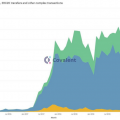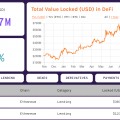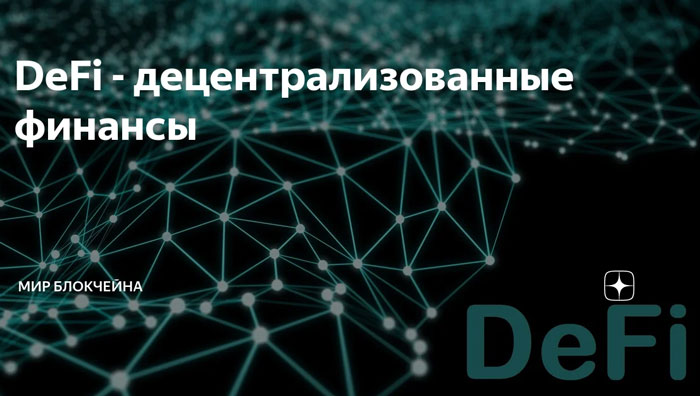
Decentralized finance (DeFi) is a financial relationship carried out through money,which are formed within various enterprises, companies, households or individual people. DeFi refers to an ecosystem of financial applications that are built on top of blockchain networks.
The term "decentralized finance" can refer to a movement that aims to create an open, free and transparent financial services ecosystem thataccessible to everyone and works without interference from any authorities. Users will retain full control over their assets and interact with this ecosystem through peer-to-peer networks (P2P) and decentralized applications (dapps).
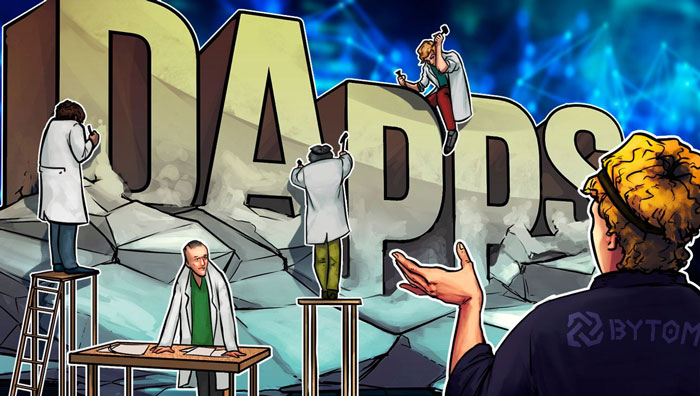
The main advantage of DeFi is that it is easyaccess to financial services, especially for those who are for some reason excluded from access to the current financial system. Another potential benefit is the modular framework and interoperability of applications based on public blockchains, which could lead to the emergence of entirely new types of financial markets, products and services.
In this article, we will take a closer look at DeFi, their potential applications, prospects, limitations, and much more.
What is decentralized finance?
Decentralized financefinance - a form of organization of monetary relations, the movement of funds of funds formed at the level of various enterprises, organizations, other business entities, households and individuals.
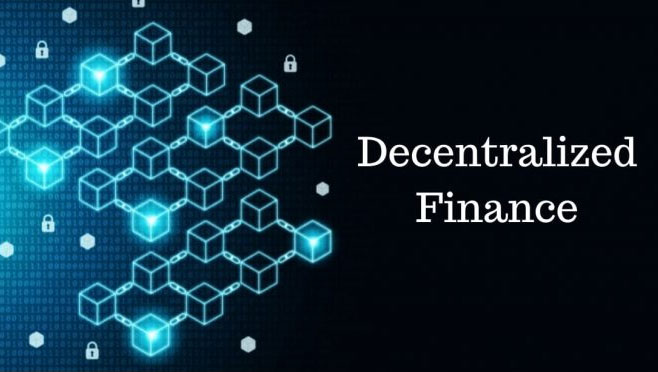
Decentralized finance includes funds of funds that are formed outside of state and municipal finances. Belong to legal entities or individuals.
Decentralized finance or open finance,designed to simplify traditional financial instruments, such as lending, borrowing, derivatives and exchange. Instead of intermediaries, they use automation.
Fully Automated DeFi Units Cancompose to gain access to new, more complex features. At the moment, the main platform for DeFi is the Ethereum blockchain (ETH), but the open finance model can be implemented on any platform that works on the basis of smart contracts.
The role of smart contracts in DeFi
Most current and potential applications in the field of decentralized finance involve the creation and execution of smart contracts.
While a legal contract uses legal terminology to define conditions between the parties to the contract, a smart contract uses computer code.

Since all conditions are described in computercode, smart contracts have a unique ability to apply them. This ensures reliable execution and automation of a large number of business processes that currently require manual control.
Smart contracts are much simpler and faster inuse, which has an effect on reducing the possible likelihood of adverse events for both parties. But despite this, they provide space for the emergence of new types of risk.
Because computer code is subject to errors and various vulnerabilities, your confidential information locked in smart contracts is at risk.
Functions of Decentralized Finance
All decentralized finances have their ownthe origin is only due to production, that is, this is that stage of economic processes when finances at a certain stage become cash. This happens at the time of the redistribution of goods and resources.
The whole essence of decentralized finance can be determined using their functions:
- Function based onregulationall financial relations within the company.All financial flows must be controlled and distributed within any enterprise, which allows for the competent distribution of the company’s resources, including money;
- Formationthe company's total capital and its distribution. This function is based on the competent use of funds and the system for their formation for the further development of the enterprise;
- Investmentfunction.It allows you to determine financial resources that can be invested in the further development of the company, for example, the purchase of new equipment or a completely different area of activity that will generate additional income in the future;
- The function that is based ondistributiontotal company income.This function is based on the process of correct formation of the company’s reserves: current, main, investment, future, etc. The financial system allows you to identify potential opportunities or problems that a company has at a given time.
Thus, the financial system is an integral element of the company’s activities in the market. Decentralized finance includes all relationships carried out using cash.
Differences between centralized finance and decentralized
Comparison will help to understand the prospects for the development of decentralized finance. Let's see how DeFi differs from the traditional finance system.
Characteristics of a traditional finance system:
- Who issues money— state/central banks.
- What is money- state currency in the form of cash.
- Who is responsible for lending- banks.
- Who exchanges assets— exchanges and brokers like Nasdaq.
- What to invest in— in shares, bonds and other instruments with the help of banks and exchanges.
Characteristics of a decentralized finance system:
- How money is issued— in the form of a reward for mining on PoW and PoSalgorithms. That is, miners find solutions to create a new block in the network and receive a reward for this in the form of new coins. The latter end up in circulation and are used by the entire community.
- What is money— cryptocurrencies and tokens.
- Who is responsible for lending- decentralized platforms that are controlled by the community. They significantly reduce the risk of cyber attacks, a problem that many centralized platforms have a hard time avoiding.
- Who exchanges assets— decentralized exchanges. The latter do not store user data and do not require showing your documents. They are just platforms for conducting transactions between traders.
- What to invest in— in ICO, STO, IEO and token baskets.
Centralized finance is formed onmacro level. Their source will be revenues from state and municipal enterprises, profits from privatization and sale of state or municipal property, and income from foreign economic activity.
Decentralized funds, unlike the former,are formed at the micro level. They represent a set of regulated forms of organization, management of financial flows of business entities in the process of formation and use of gross income, cash and material savings. Such systems are represented by funds of commercial and non-profit organizations, entrepreneurs.
Key benefits of DeFi
The traditional financial system relies on institutions such as banks, which act as intermediaries, and courts to ensure the resolution of disputes.
DeFi applications do not need intermediaries andships. The code determines the resolution of each possible dispute, and users, in turn, control all their means. This reduces the cost of providing and using products, and allows you to create a more trouble-free financial system.
With decentralized finance, users will have two incredible advantages over a modern system:
- The ability to fully control assets and access to them.You no longer need to trust intermediaries who charge interest for their services. Everyone can access the service, and the system does not have a single control authority.
- All protocols on which DeFi operate are open source.Accordingly, anyone can create a financiala product based on them and come up with a new form of value creation. This will accelerate the development of innovation and strengthen the network effect, because with each new product more and more users and developers will switch to such platforms.
Although for this you need to have programming knowledge. An ordinary person without such experience is unlikely to be able to expand the capabilities of the DeFi ecosystem. If he is not an investor, of course.
What shapes the DeFi ecosystem?
For a better understanding of decentralized finance, in the article we will analyze the points:
- StablecoinsDeFi building block.Unlike cryptocurrencies like Bitcoin or Ethereum, which are known for their volatility, stablecoins are designed to remain “stable,” equal to one unit of fiat currency. Most stablecoins are pegged to the US dollar, but other fiat currencies are also used. For example, the Chinese yuan.
- Decentralized lending.You can take out a loan on the blockchain without having a bank account.
- Decentralized exchanges.Buying and selling cryptocurrencies using the blockchain instead of a centralized exchange. For example, like on the Coinbase platform.
- Collateralization of credit (collateralization).Provide digital assets to back decentralized loans, creating a resource for the lender in case of default.
- Decentralized IdetitySmart contracts use identifiers, for example, to confirm your solvency in the case of decentralized lending.
- Compatibility (composability).Combining DeFi functions of variousappointments. A similar principle applies to software libraries. For example, if one contract accepts cryptocurrency and generates interest, a second contract can reinvest that interest.
- Risk management.High returns in DeFi often come with equally high risks. Fortunately, new tools are emerging to reduce these risks.
Varieties of DeFi with Examples
Decentralized finance generally consists ofthe latest monetary system, which is built on the basis of smart contracts and decentralized applications in the Ethereum ecosystem. She does not have central authorities and levers of its application.
Here everyone is equal: the capabilities of the participants in the system do not differ depending on their place of residence, credit history, income and other familiar factors in the modern world.
The most promising areas of DeFi development:
- decentralized exchangesby type 0x or CyberNetwork;
- stablecoinsby type Dai or USDC;
- token baskets, that is, the decentralized equivalent of ETF;
- smart contract asset management fundsMelonPort type;
- tokenized lending platformsFulcrum or Compound type;
- decentralized forecast marketsaccording to the type Augur and Gnosis.
Problems Using DeFi
- Low productivity.Blockchains are inherently slowerthan their centralized counterparts, leading to the creation of additional applications. DeFi application developers must take into account such limitations and optimize their products accordingly.
- High risk of user error.DeFi applications transfer responsibility fromintermediaries to the user. This can be a negative aspect for many. Developing products that minimize the risk of user error is especially challenging when products are deployed on top of immutable blockchain networks.
- Bad user experience.Current usage of DeFi applicationsrequires additional effort on the part of the user. For these applications to be a key element of the global financial system, they must provide tangible benefits that influence users' desire to move away from the traditional system.
- The mess of the ecosystem.Finding the most suitable application cancan be quite a challenging task, and users must have a certain skill to choose the best option. The challenge is also not only in creating applications, but also in thinking about how well they can fit into the larger ecosystem of decentralized finance.
Potential DeFi Applications
Loan and credit
Open lending protocols are oneone of the most popular types of applications in the DeFi ecosystem. Open decentralized borrowing and lending have many advantages over the traditional credit system. These include: instant settlement of transactions, the ability to secure digital assets, no credit checks, and potential standardization in the future.
Due to the fact that in this case creditservices are built on public blockchains, they minimize the trust they need and provide a guarantee of the operation of cryptographic verification methods. Credit market placements on the blockchain reduce counterparty risk (counterparty risk), make loans and loans cheaper, faster and more affordable for more people.
Monetary banking services
Since DeFi applications are financial by definition, it is obvious that they will have monetary banking services. These could include issuing stablecoins, mortgages and insurance.
As the blockchain industry develops, more and moreattention is paid to the creation of stablecoins. They are a type of cryptocurrency that is tied to a real asset and can be digitally transferred with relative ease. Since cryptocurrencies are highly volatile, decentralized stablecoins can be adopted for everyday use as digital cash that is not issued or controlled by a central authority.
Due to the number of intermediaries that mustto participate, the process of obtaining a mortgage is quite expensive and time consuming to complete. Using smart contracts, underwriting and legal fees can be significantly cheaper.
Blockchain insurance could eliminatethe need for intermediaries and allow risks to be distributed among multiple participants. This could lead to lower insurance premiums without affecting the quality of service.
Decentralized markets
This category of applications can be difficult to evaluate, since the DeFi segment itself provides a large number of opportunities for various financial innovations.
Perhaps some of the most importantDeFi applications are decentralized exchanges (DEX). Such platforms allow users to trade digital assets without the need for a trusted intermediary (an exchange) to hold your funds. Transactions are made directly between user wallets using smart contracts.
Since such trading platforms needWith much less maintenance, decentralized exchanges charge lower trading fees than their centralized counterparts.
Blockchain technology can also be used.for the issuance and possession of a wide range of traditional financial instruments. Such applications will work decentralized, this eliminates the need for a single point of failure and custodians.
For example, security token issuing platforms can provide issuers with the tools and resources to launch tokenized securities on the blockchain with customizable parameters.
Other projects will be able to afford to create derivatives, synthetic assets, decentralized forecasting markets and much more.
The essence of classic finance
The term finance comes from lat. financia, which means income, payment on the transaction. He first appeared in the trading cities of Italy in the XIII-XV centuries.
The essence of finance, the laws of their development,the scope of commodity-money relations covered by them and the role in the process of social reproduction is determined by the economic structure of society, the nature and functions of the state.
The emergence of finances is due to factors such as:
- social division of labor and division of society into various social groups;
- the development of commodity-money relations in connection with the growth of production and an increase in GDP and ND (national income);
- the emergence of independent, independent business entities engaged in entrepreneurial activity and creating the necessary cash funds for production;
- the creation of a centralized state.
Finance is economic,monetary relations associated with the formation, distribution and use of funds of funds in order to ensure conditions for expanded reproduction and fulfillment of the functions and tasks of the state.
Finance as an economic category expresseseconomic relations regarding the production, distribution and use of gross domestic product (value of final goods and services produced within a given country for a certain period) and national income (newly created value (or value of GDP) minus the tools and means of production consumed in the process).
At the production stage, GDP and ND are created. At the distribution stage, financial relationships arise. Without financial participation, GDP and ND cannot be distributed. Production has four stages: production, distribution, exchange, consumption.
Finance comes in cash, but notall monetary relations are financial. Monetary relations become financial when cash funds are created as a result of the production of goods and the provision of services during their sale. This applies to all areas of economic relations.
As a result of the independent movement of money, funds are formed: centralized and decentralized, this expresses the material content of finance.
Comparative characteristics of money and finance
|
Money |
Finance |
|
the universal equivalent by which the costs of producers of goods are measured. |
economic instrument for the distribution and redistribution of GDP and ND, tools for monitoring the formation and use of cash funds |
|
functions: measure of value, means of circulation, means of accumulation and savings, means of payment, world money |
functions: distribution, control, (regulatory) |
|
money arose 26 centuries ago |
finance arose 8 centuries ago |
|
more general economic category |
secondary category derived from money |
|
cover broad economic relations |
cover narrower cash fund relationships |
Financial relationships arise between:
- enterprises in the process of acquiring inventory items, selling products and providing services;
- enterprises and higher organizations (concerns, holdings, financial and industrial groups) when creating cash funds and their distribution;
- enterprises in the formation of the circuit of its funds;
- inside the household in the formation and use of family budgets;
- the state and the enterprise when paying the last mandatory payments to the budget system, as well as financing expenses from the budget;
- by the state and citizens and extrabudgetary funds when making payments and receiving funds;
- individual links of the budget system, etc.
Finance Functions
Distribution function— carried out in all areassocial life: in material production, in the immaterial sphere, in the sphere of circulation. The subjects of distribution at the micro level are economic entities and households, and at the macro level the state. The objects of distribution are GDP and ND in monetary form. Three stages of distribution:
- formation of cash funds;
- distribution of funds through financial instruments (expenses, taxes, credit, prices);
- use of funds.
The distribution of funds takes place at the micro level, and at the macro level there is a redistribution of national income. The need to redistribute national income is associated with:
- with the presence of two areas: production and non-production (education, management, healthcare, social security, that is, where there is no ND created);
- with the existence of various social groups;
- with intersectoral and inter-territorial redistribution in the interests of the most efficient and rational use of income.
As a result, national funds are formed — budgets of all levels and extra-budgetary social funds.
Control function— signals any deviations that occurin the proportions of distribution of GDP and income, in the timely and complete formation of target and monetary funds, in the provision of necessary resources for production processes.
The control function of finance is manifested:
- before the onset of the distribution process, when programs, forecasts, budgets are created;
- in the process of using cash funds;
- in the process of summing up, that is, control is continuous.
The control function is implemented through:
- making tax payments and financing from budgets;
- financial and economic control at individual enterprises;
- credit and banking control in the process of lending and cash settlements.
Regulatory function— associated with government interventionwith the help of finance in the reproduction process to improve the quality of the production process, increase its volume and improve the financial situation of workers.
Rate this publication

